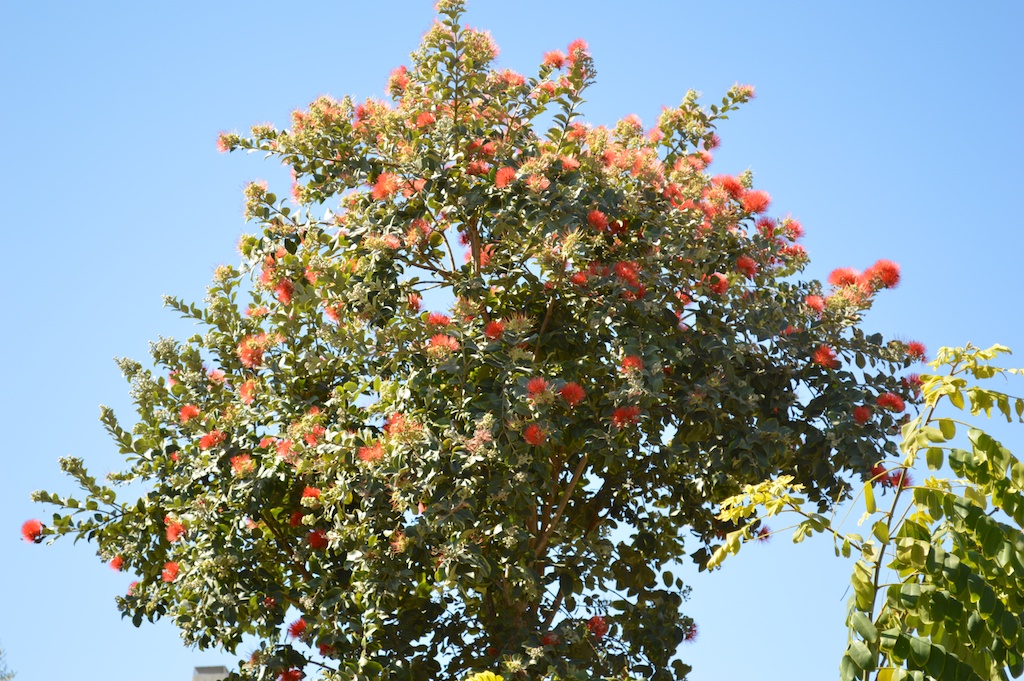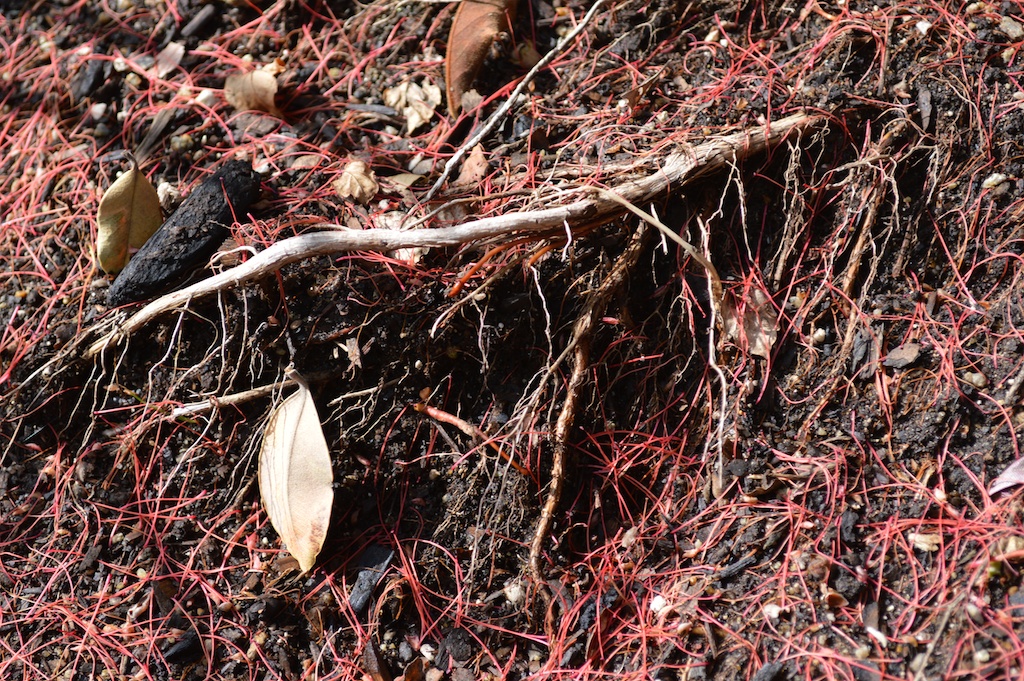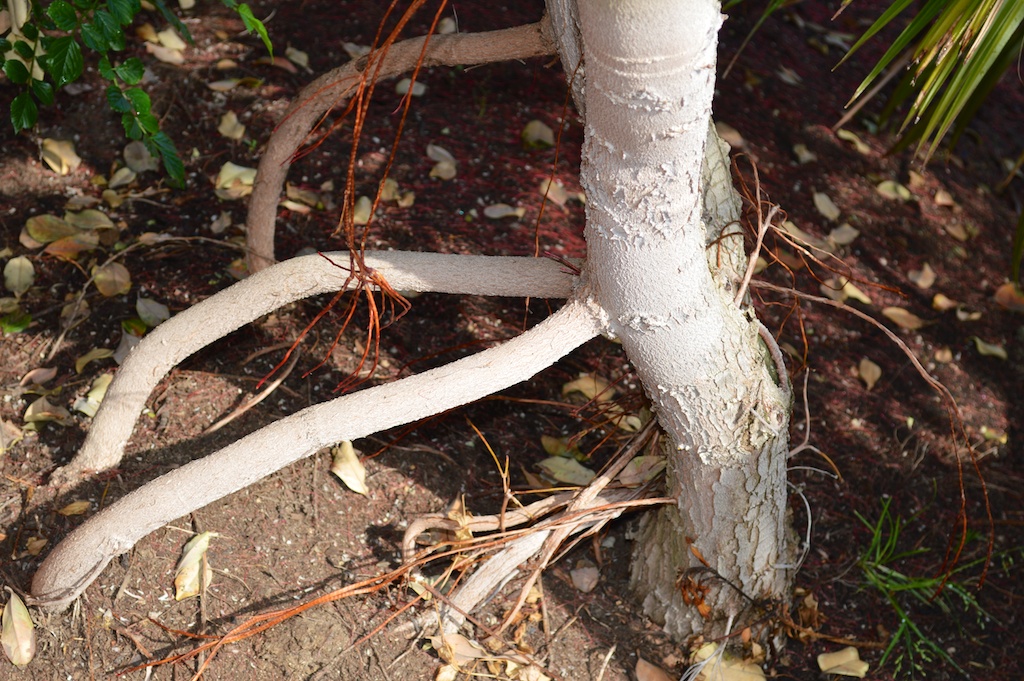‘Ohi’a lehua (Metrosideros polymorpha) is the most common and variable of all native trees found in Hawaii. Because it is such an extremely variable plant, this plant in its native habit ranges from a large shrub to a towering tree that blooms in shades of red, yellow, orange, salmon, or even pink. I grow Metrosideros polymorpha “Spring Fire” in my garden. This form can be distinguished by the large, bright red powder puff–like flowers and the hairy underneath of the leaf that makes it appear grayish in color.
Similar to common New Zealand Christmas Tree (Metrosideros excels), Metrosideros polymorpha “Spring Fire” is a much more tropical-looking tree and has a showier flower. In my yard I use the tree as a single space filling tree or as a background/windbreak group planting. Pruning each fall will be needed to maintain desired shape for the job you want this plant to do in your garden. If not topped, for example, it will continue to grow into a tall tree. The largest ‘Ohi’a lehua I have heard of in California is about 25 feet tall. My largest was planted from a 10-gallon-size plant in 2006 and is now 15 feet tall.
Metrosideros polymorpha “Spring Fire” gets its name from to the fact the plant blooms heaviest during spring. However, it will re-bloom throughout the year, just not as profusely as during spring. The red powder puff flowers are very good at attracting hummingbirds, honey bees, and butterflies. The plant is trouble-free and disease-resistant in a Mediterranean climate. Metrosideros polymorpha “Spring Fire” is very cold-tolerant for a plant that originates from Hawaii. The lowest reported temperature through which I know of it having survived is 20 degrees Fahrenheit.
So why is it not found more in nurseries? What’s the catch? There are two things I have found that keep it from becoming more popular, in my opinion. One: it is slow growing. For those who want a tree like they would find in Hawaii, they will be waiting decades for that to happen. Two, and this is the most important thing for me, it has very invasive roots that will mat the ground and choke out nearby plants.
While I find the aerial roots to make for an interesting sight, the fine hair roots will seek out and penetrate even very small cracks or joints in drainage pipes or water features. I am constantly removing roots from out of my Koi pond where the roots grew under the rocks and into the water. Once in water they just continue to spread out.
Metrosideros polymorpha “Spring Fire” makes a nice addition to any style garden as it is quite versatile. If you want to add a little taste of Hawaii to your garden, this tree is a great start.







Comments: